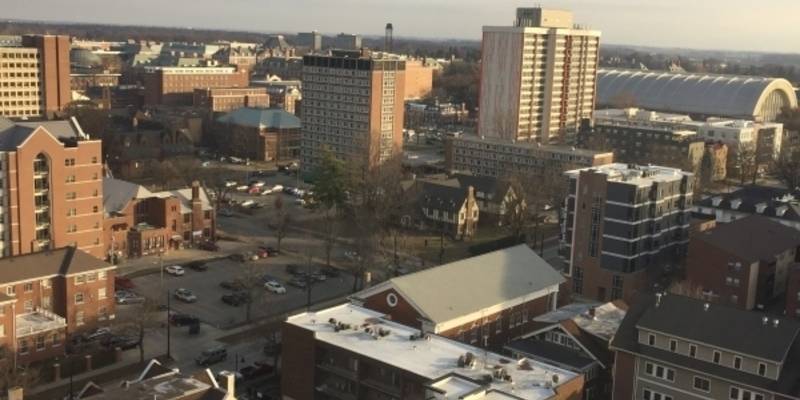Champaign-Urbana has a diverse array of beautiful commercial, residential, and institutional architecture. C-U has also lost its fair share of architecture. Whether they were campus buildings demolished in the pursuit of progress, or a unique home demolished for a parking lot. The middle ground between preservation and demolition, however, may be the most horrifying.
A company or institution may outgrow its building at some point and instead of relocating, they may elect just to add some space to their current building or rearrange the space to better suit their needs. Sometimes, this is done thoughtfully and respectably, like Precision Graphics expansion of the historic Atkins Building, which blends seamlessly into the historic building. In other cases, expansions may seek to create a striking juxtaposition by clashing historic and modern architectural styles. However, a great deal of these additions onto historic structures are simply lazy, designed to minimize cost, rather than understand and build upon the architectural framework. This article will examine some of the area’s farces in design.
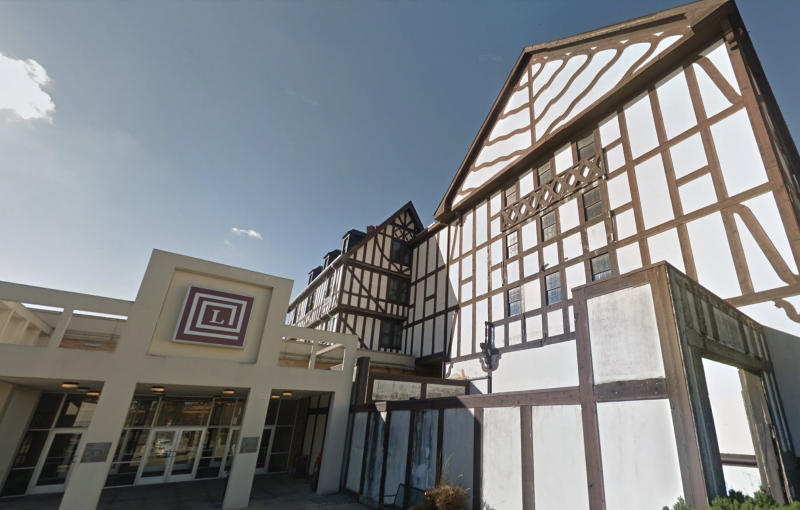
Urbana Lincoln/Landmark Hotel – Lincoln Square & Subsequent Addition, 201 Lincoln Square, Urbana
The addition of the Lincoln Square Mall in 1961 enclosed the hotel’s grand entryway and added a bland behemoth of a shopping center. Designed by Victor Gruen, the father of the American enclosed mall, the center was a modernist marvel, with fashionable clean lines, skylights, and a buzzing atmosphere. As the mall went through subsequent renovations, the midcentury aesthetic it once boasted also became lost to a hodgepodge of different businesses and odd architectural treatments as it hemorrhaged tenants resulting in a dead mall attached to a once grand hotel.
The Landmark Hotel itself also received an addition to its north side in 1982. The new portion, distinguishable by a change in timber framing, lack of bricks, and oddly-themed murals, mimics the original hotel design, but cost-cutting measures are evident.
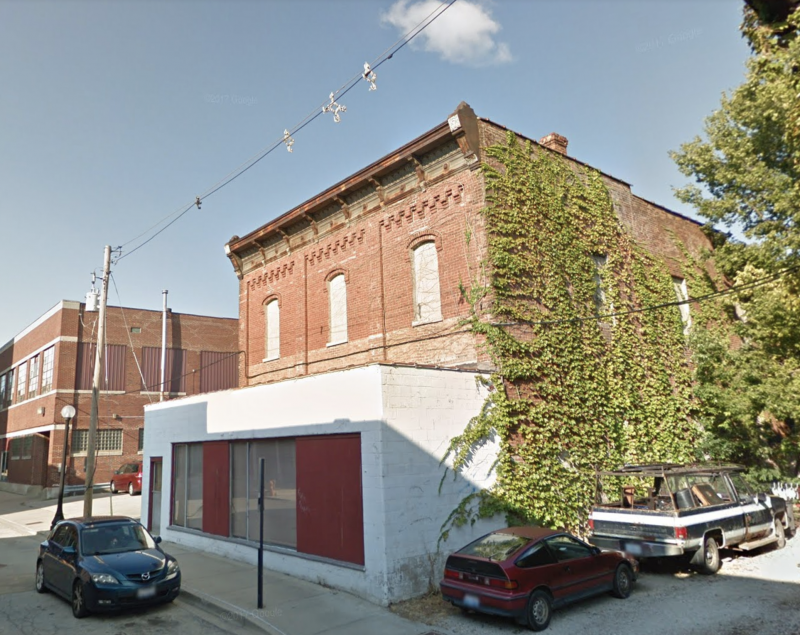
114 N. Market Street, Champaign
Much of the storefronts in downtown Champaign are located along University, Neil, and Main/Church, but the narrow Market Street offers a quiet respite from the major streets. Many of the buildings along this two block street are ornate, historic brick buildings retaining much of their integrity in over 100 years of existence. Even the sidewalk is old, a portion of an original limestone footpath from the 1890s sits along the street, adorned with a plaque. However, 114 N. Market disrupts the historic character; a concrete block storefront addition was placed over the storefront sometime in 1950s or 60s, perhaps to make additional space for the grocery store that occupied it. The Italianate detailing along the cornice stands in stark contrast to the bland, sloppily-constructed storefront space. Ironically, the additional storefront space did not save the grocery store from going under, and the storefront has been empty since the 1960’s, when the building became used for warehouse space. Since the 1980s, it has been a News-Gazette warehouse.
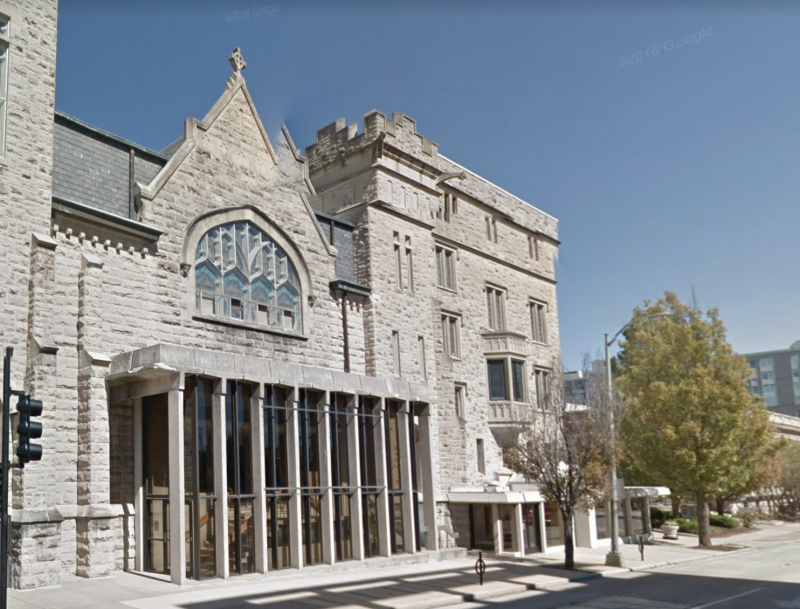
First Methodist Church, 210 W. Church, Champaign
Where ornate gothic stylings meet DMV-style entrances. What was likely a grand entrance to a place of worship is now a sterile entryway. Though the architectural styles mirror that of an expansion to the church’s east side, the centrality of this new gateway in a beautiful stone façade is disappointing and hard to avoid, whereas the expansion remains both hidden and more in line with the building’s architecture.
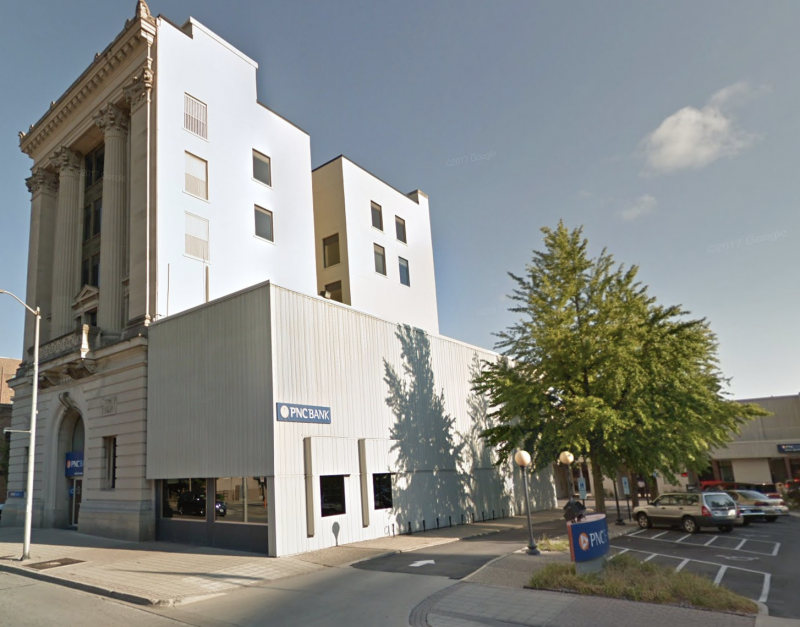
Former PNC Bank, 30 E. Main Street, Champaign
The imposing Corinthian columns that tower over the intersection of Walnut and Main are symbol of wealth and power, as well as the stability of a financial institution. Despite this, jutting out to its south and west is an expansion reminiscent of a storage unit, the corrugated metal additions, lacking windows or any architectural reference to the original structure make for a particularly unharmonious dichotomy. The result is a detailed building seemingly rejecting its modern portion like a civil war transplant.
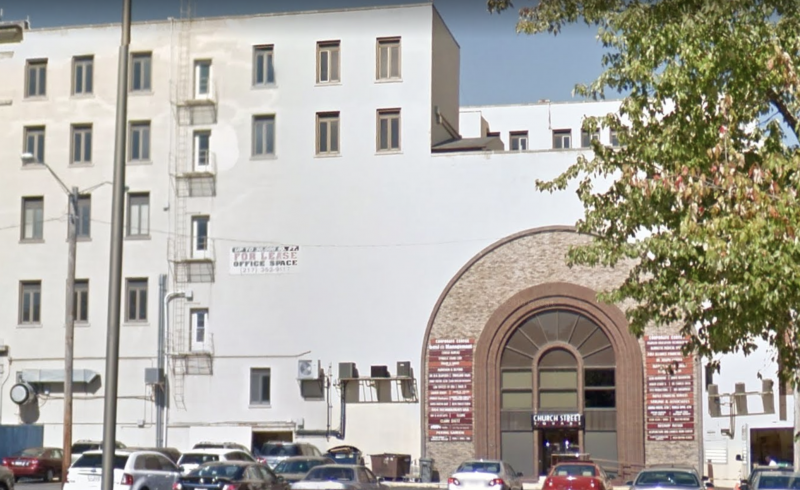
Church Street Square, 206 N. Randolph, Champaign
The reuse of the former Robeson’s department store is not a huge offender when compared to the other buildings in this list. The former building has been preserved and repurposed into a complex of shops, restaurants, and offices. Along Randolph and Church frontages, many of the architectural features are preserved and well-maintained. What puts this building on this list, however, is its south entrance.
Many visitors and employees use the parking lot immediately south of the building and this new entryway was constructed to accommodate those user of the building. The design feels inauthentic and contrived, almost like a design one would find at Chicago’s Navy Pier or in a suburban mall. And despite its placement in the rear of the building, thousands of passersby on the northbound Randolph Street experience a full view of awkward face of the building, rather than the historic façades on Church and Randolph.
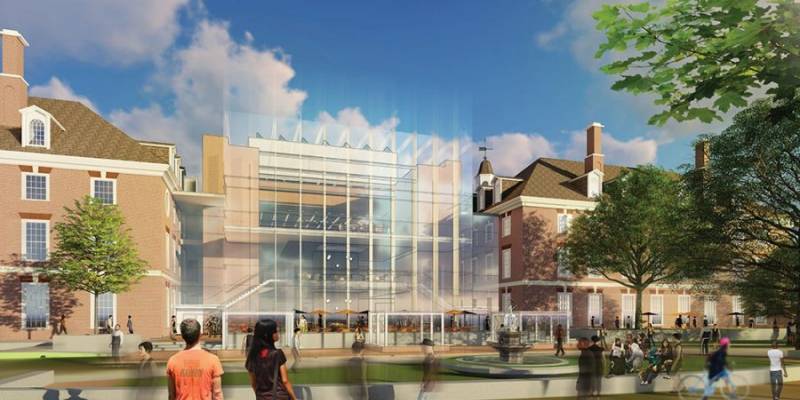
Illini Union?
Despite its colonial design, the 1941 Illini Union is relatively young. The building was expanded 20 years later in a similar style and, alongside Foellinger Auditorium, has become the focal point of UI’s Main Quad.
The University, seeking to expand and renovate the aging student center, recently announced a nearly $250 million initiative to completely revamp the building, adding amenities, student space, and underground parking. One notable takeaway was the addition on the west side, which would replace the current patio Diana Fountain with a large, glassy enclosed coffeeshop and meeting space. While there don’t seem to be many changes to the façade, we have little to go off of beside the rendering. This glassy addition seems to be a sleek and modern update to an aging building, but will it stand the test of time?
Of course, these buildings are useful to the area. They provide places of congregation, commerce, and employment. However, these architectural missteps should serve as a cautionary tale to the residents of the area that our twin cities are unique in design and feeling and our decisions, whether adding onto a building or altering our own homes carry significant weight in the preservation of the community’s heritage.
If you believe your home is historic, Champaign’s Preservation and Conservation Association can help you with resources and architectural supplies to better understand and preserve your property’s historic and architectural value.








